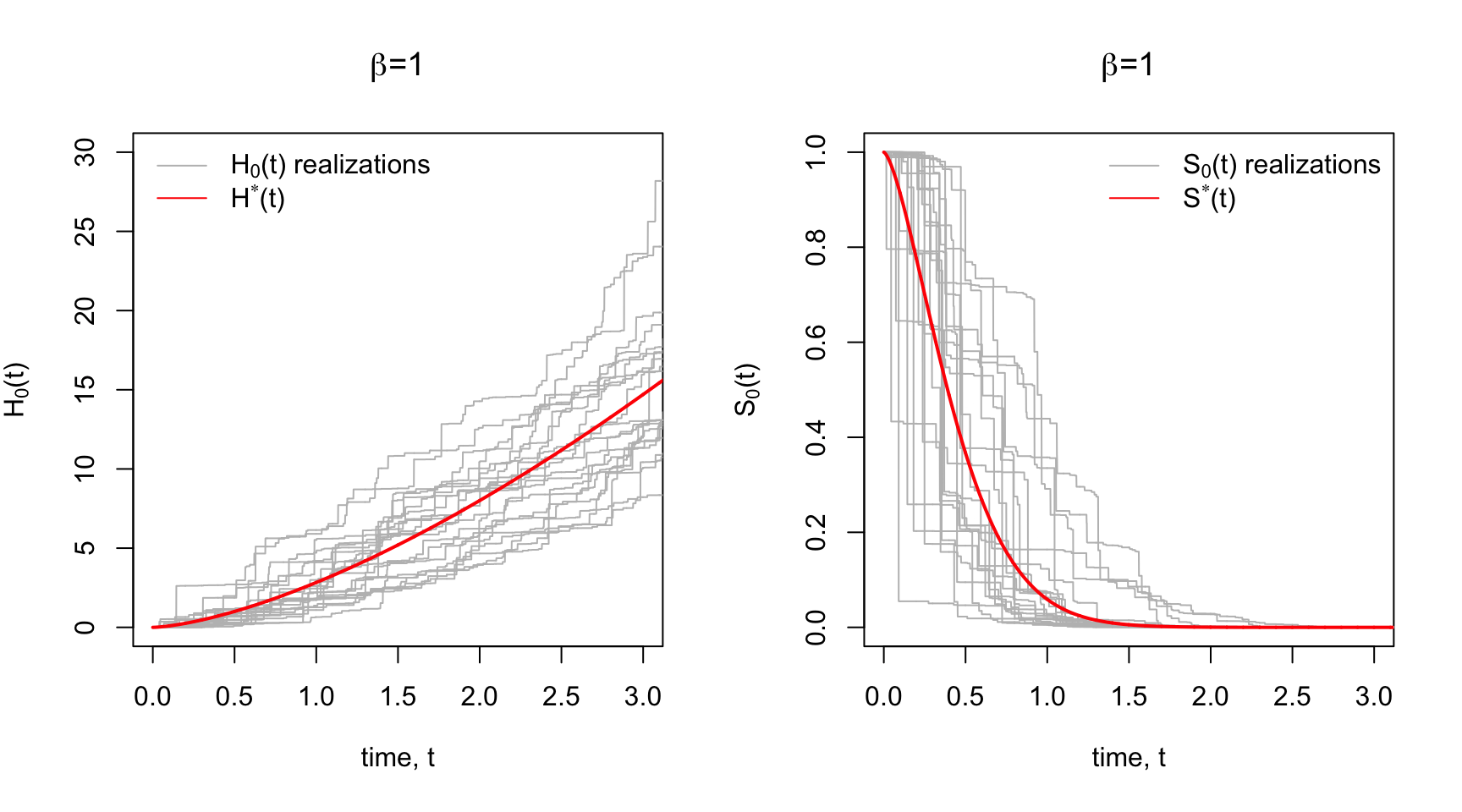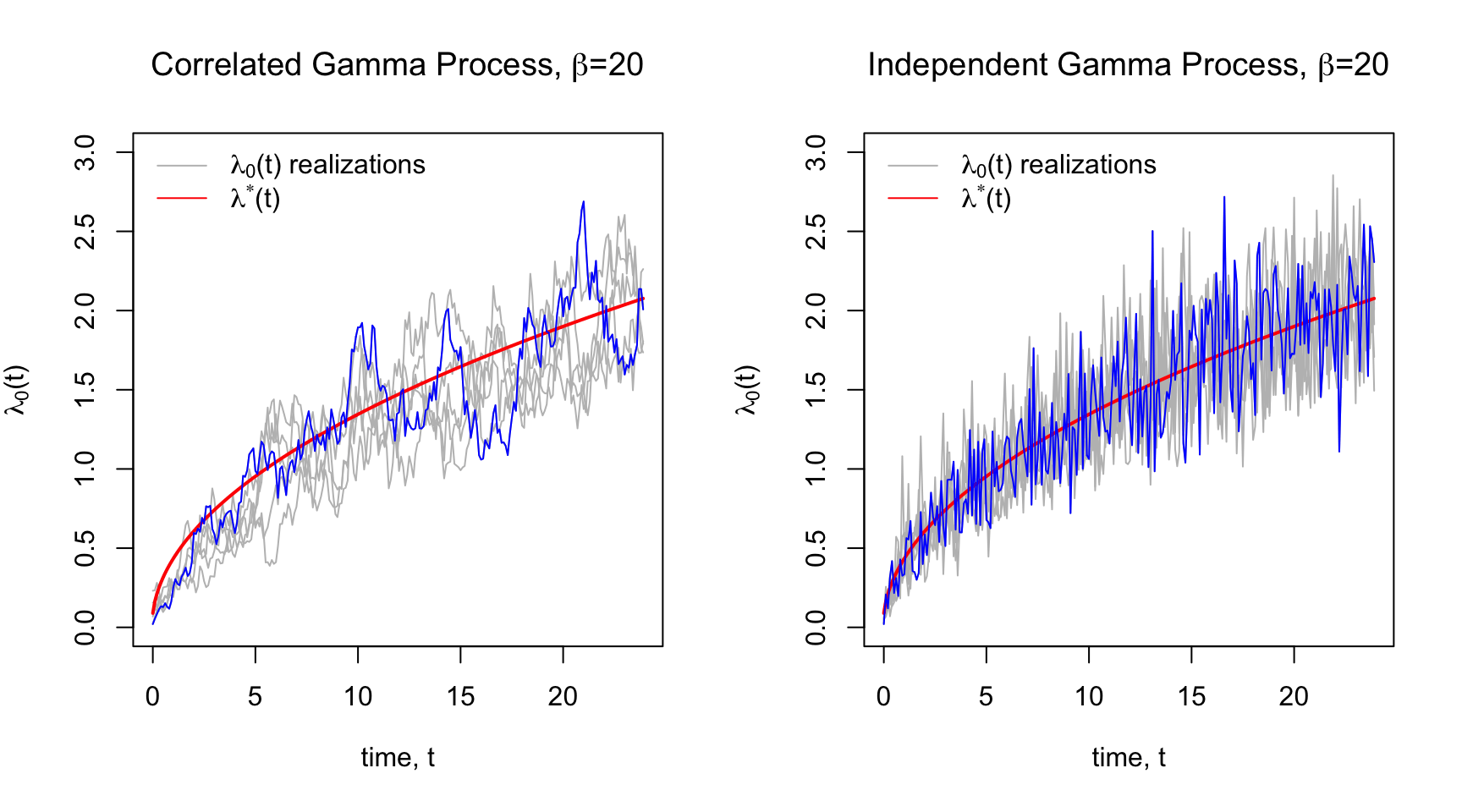Gamma Process Prior for Semiparametric Survival Analysis
Heads up: equations may not render on blog aggregation sites. See original post here for good formatting. If you like this post, you can follow me on twitter.
Motviation
Suppose we observe survival/event times from some distribution
This already works fine, so why go Bayesian? Here are just a few (hopefully) compelling reasons:
- We may want to nonparametrically estimate the baseline hazard itself.
- Posterior inference is exact, so we don’t need to rely on asymptotic uncertainty estimates (though we may want to evaluate the frequentist properties of resulting point and interval estimates).
- Easy credible interval estimation for any function of the parameters. If we have posterior samples for the hazard, we also get automatic inference for the survival function as well.
Full Bayesian inference requires a proper probability model for both
The Gamma Process Prior
Independent Hazards
Most of this comes from Kalbfleisch (1978), with an excellent technical outline by Ibrahim (2001).
Recall that the cumulative baseline hazard
The Gamma Process is such a prior. Each realization of a Gamma Process is a cumulative hazard function that is centered around some prior cumulative hazard function,
Okay, now the math. Let
The increments in the cumulative hazard is the hazard function. The gamma process has the property that these increments are independent and Gamma-distributed. For a set of time increments
Below in Panel A are some prior realizations of
Since there’s a correspondence between the

